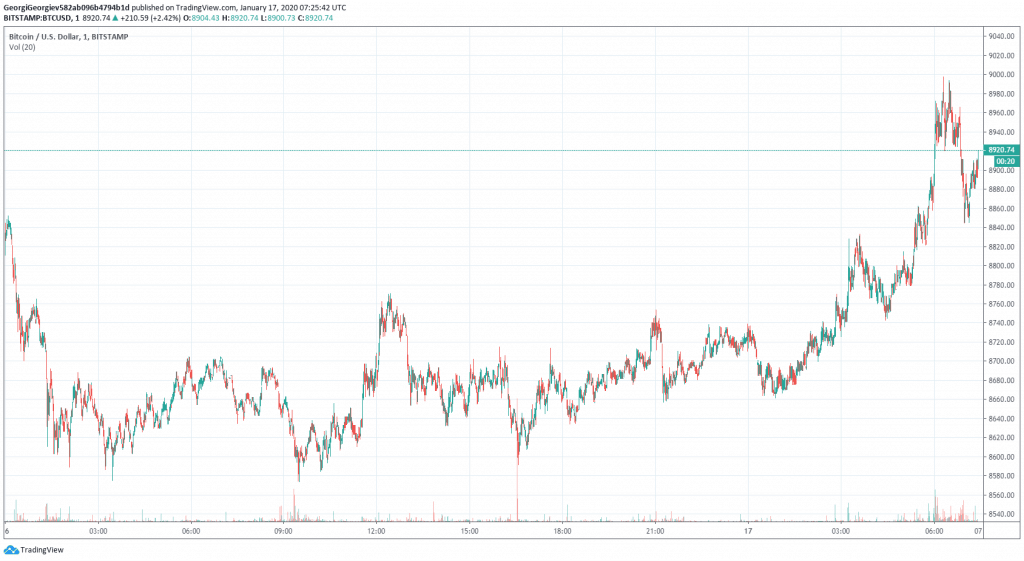SPONSOR: ThreeD Capital Inc. (IDK:CSE) Led by legendary financier, Sheldon Inwentash, ThreeD is a Canadian-based venture capital firm that only invests in best of breed small-cap companies which are both defensible and mass scalable. More than just lip service, Inwentash has financed many of Canada’s biggest small-cap exits. Click Here For More Information.

Square’s Crypto Division Finally Releases Details of First Bitcoin Product

By Nick Chong
- Last year, Jack Dorsey — the chief executive of both Square and Twitter — began to openly shill Bitcoin in a number of public channels.
- Naturally, his love for Bitcoin extended into his companies, with Square announcing a new division called Square Crypto in 2019.
For instance, on the Joe Rogan Podcast, he revealed that he thinks the cryptocurrency will become a native currency of the Internet, and during an official earnings call for his fintech company Square, he took some time to tout his love for Bitcoin.
Naturally, his love for Bitcoin extended into his companies, with Square announcing a new division called Square Crypto in 2019.
Dorsey’s premise was that someone told him the most important thing he could do for Bitcoin is to “make the broader crypto ecosystem better,†hence the creation of this new division to do “what’s best for the crypto community and individual economic empowerment.â€
#BitcoinTwitter and #CryptoTwitter! Square is hiring 3-4 crypto engineers and 1 designer to work full-time on open source contributions to the bitcoin/crypto ecosystem. Work from anywhere, report directly to me, and we can even pay you in bitcoin! Introducing @SqCrypto. Why?
— jack (@jack) March 20, 2019
Throughout the entire hiring process of this new division, the team photos, memes published on Square Crypto’s Twitter page, and even the grant-giving process, it wasn’t exactly clear what this team was working on.
The team leader, a former senior employee at Google, did mention products meant to improve the usability of Bitcoin as a day-to-day form of money but was slow to elucidate any ventures it was eyeing.
But today, we got our answer.
Square Crypto Unveils First Product, a Bitcoin Lightning Network Developer Kit
According to a Square Crypto blog post published Tuesday, the company has launched something called the Lightning Development Kit (LDK).
This is kind of like a traditional software development kit (SDK) but focused on the Lightning Network, a second-layer scaling solution that effectively migrates some transactions off the main chain to allow for lightning-fast, effectively free, and cross-chain transfers.
We’ve got the team. We’ve got the mission. We’ve got hit or miss tweets. And now it’s time to talk about what we’re building: Introducing the Lightning Development Kit, or LDK. https://t.co/o73cJy7Cur
— Square Crypto (@sqcrypto) January 21, 2020
The LDK, the post indicates, will allow wallet developers to create “custom†integrations of the Network in an “easy, safe, and configurable way†through an API, demo apps, and other technical tools.
As to what exactly the LDK can be used for, at least from a top-down perspective, Square Crypto gave three examples:
1) Adding Lightning capabilities to existing bitcoin wallets — no need to create a separate wallet just for Lightning. 2) Supporting multi-device, multi-application access to a single wallet. 3) Allowing wallets to make UX/security/privacy tradeoffs such as external transaction signing and customizing their state backup to a cloud service.
Essentially, it should make the integration of the Lightning Network into existing or up-and-coming cryptocurrency software much easier than it is, and should, therefore, increase the adoption of the scaling solution with ample time.
It’s kind of like a shoehorn, but with the shoe being Bitcoin software and the foot being the Lightning Network…
Very Good Timing
The release of the LDK comes at a very good time, with the Lightning Network once again entering the minds of Bitcoin and cryptocurrency enthusiasts.
Per previous reports from Blockonomi, Bitcoin proponent Hodlonaut has started what is known as the Lightning Network Trust Chain for the second time.
Last time, this challenge, which sees individuals use the Lightning Network and large BTC transactions to create a link between Twitter accounts, gained much steam. Dorsey and LinkedIn and Microsoft board member Reid Hoffman participated in the Chain, amongst other prominent members of the community.
And as a result, the Lightning Network saw a flurry of growth, with the capacity of the Network nearly doubling in value during the time the chain was being formed.
With the arrival of the second Trust Chain and Square Crypto’s new Lightning Network kit, this Bitcoin scaling solution could see a micro-renaissance, so to say.
Source: https://blockonomi.com/squares-crypto-first-bitcoin-product/












